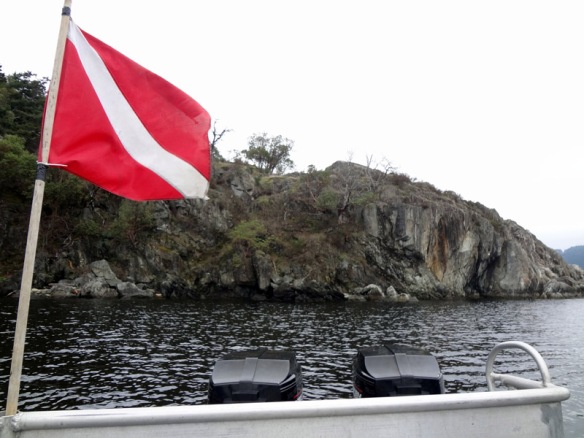By Amanda Kahn
[Cross-posted on the Students Ensuring our Oceans’ Future blog.]
One month ago, we were busy in the lab at the University of Alberta preparing and calibrating instruments, gathering GPS waypoints, and preparing dive plans. Three weeks ago, we drove and flew to Vancouver Island with our equipment and plans. Two weeks ago, we boarded a ship to study the glass sponge reefs in the Strait of Georgia in B.C.

Heading out on CCGS Vector, our home away from home. Credit: A Kahn 2013
The main reef we were studying on this trip was on Fraser Ridge. If you drained the water from the SoG, you’d be able to see the ridge and the reef about 14 km away from Vancouver. Fraser Ridge reef is too deep for us to study directly by scuba (150 to 180 meters deep), so instead we study it with the help of the remotely operated vehicle (ROV) ROPOS. ROPOS is piloted and run by the Canadian Scientific Submersible Facility (CSSF) and functions as our eyes and hands underwater.

ROPOS, our eyes and hands underwater. Credit: A Kahn 2013
With those eyes and hands, we studied the energy use and water pumping capacity of the glass sponges that build the reef. Glass sponges are really amazing animals—they can move huge amounts of water through their bodies, which are basically modified to be amazing filters. 9,000 liters of water can pass through a single sponge osculum (the “chimney” that water is released from by the sponge) each day! And from that, the glass sponges can feed on tiny particles, especially bacteria. This is pretty unique among animals—most other animals that feed on particles suspended in the water (called “suspension feeders”) can only capture particles that are larger by 10 times or more. We did a lot of great science while on board the ship, and I’m now at the field station in Bamfield, British Columbia, to work with other sponges. We will all spend the winter back in Edmonton working up the samples and data collected from this trip.

Glass sponges in a reef–check out all of those oscula! Credit: CSSF 2011
I’m happy to be a part of SEOF because I can feel connected to other folks who are near the ocean full-time, can ask questions about logistics before I arrive, etc. I’m the regional representative for Alberta and in this post wanted to show that being far from the ocean does not mean that we cannot have access to marine animals or study ocean-related issues. Logistics may be more tricky than driving down to beach for the weekend to do some intertidal sampling, but it’s definitely doable and totally worthwhile. Contact me if you have questions about the reefs or if you’re in Alberta and have questions about how you can get involved in the marine science community across Canada.
To learn more about the reefs, check out these videos, compiled by Sameena Sherman, a student from our lab:




